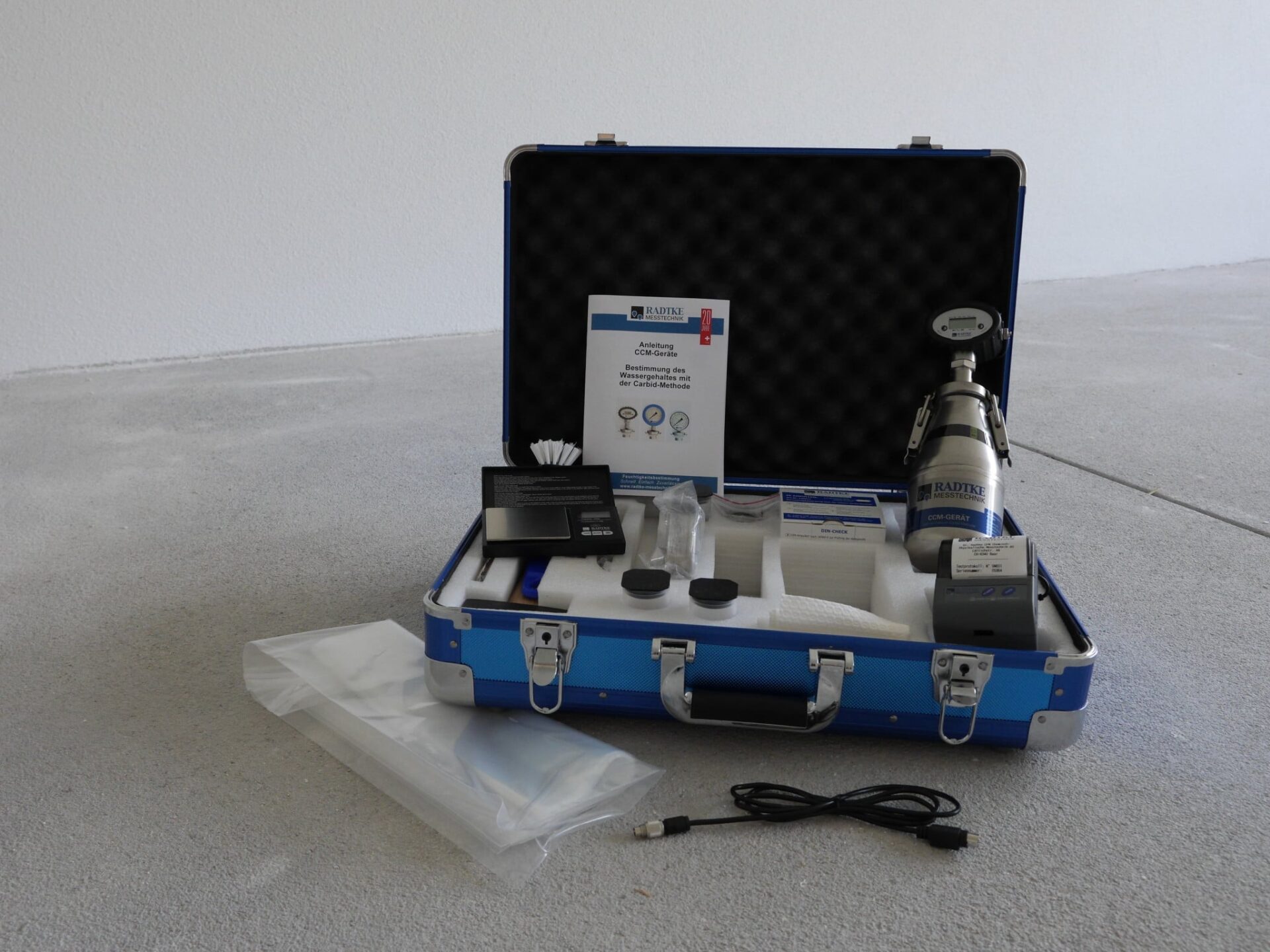Is it possible to get the correct result with the Carbide Meter if one ball is missing?
Yes, but….. The ball set has three other important functions apart from the calibration!
Starting Effect:
Smashing of the carbide ampules
Mix effect:
Thoroughly mixing at least one solid material with another solid, liquid or pasty material. The longer it is mixed, the better the carbide can react with the humid sample, and the quicker the reaction can run through.
Grinding/Reduction effect:
If the sample should be ground during the reaction, the balls will do this job for you when you shake the bottle hard enough. Important: The more intensively you shake, the quicker the samples will be ground. After a certain amount of time, depending on the intensity and duration of the shaking as well as the amount of balls and the sample size, the sample can’t be ground anymore. This is due to the fact that the efficiency factor of the grinding process is rather small (generally: amount of shakes between ball and sample)
Discussion: If one ball is missing…
The ball set, which consists of 4 balls (3 big, 1 small), is also there to control the free volume in the pressurized bottle. The ball set is a part of the whole calibration process. The set pressure of after the reaction of 1g water (calibration ampule) with one carbide ampule is 1.00 bar at 20˚C. If for example the small ball would be missing, it wouldn’t be tragic, as the error would only be relevant at 1-2 decimal points.
Impact on Starting effect:
No Impact
Impact on Mix effect:
Elongates the Reaction time, until the reaction is complete. The mixing process doesn’t work as well when shaking time and intensity stay the same.
Impact on Grinding/Reduction effect:
If there is one ball missing from the bottle, the sampled material won’t be ground as much if the shaking time and intensity stay the same. The measured pressure will end up being lower than when 4 balls are used because a part of the water still be stuck inside the pores after a reaction time of 10 minutes (Readiness test). Hint: When testing the readiness, the chemical reaction is not done after 10 minutes. (See already published article: What water do I measure with my Carbide Meter?) The Impact of the missing ball lies in a range of 0.1 to 0.2 M-%.
Considerably more relevant influences on the measuring results are found in the preparation for the Carbide Measurement. Those include:
- the choice of the sampling spot (preferably a big room, after pretesting with a humidity meter or a thermal camera),
- the representative sampling (Area of about 10 x 10 cm) over the complete cross-section of the screed as well as
- the careful homogenization of the sample in the PE-bags.
Why?
The Impact of the humidity in screeds on a parquet floor is a lot bigger in a big room than in a small due to the total area. The screed has, during the time it dries, a vertical humidity profile, which from top to bottom can have a total difference of up to 2.5 M.%! That’s why both the sampling as well as the homogenization have to be done with extreme care.



Write a Comment